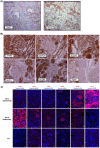Kidney Xenotransplantation: Are We Ready for Prime Time?
- PMID: 37086386
- PMCID: PMC10182924
- DOI: 10.1007/s11934-023-01156-7
Kidney Xenotransplantation: Are We Ready for Prime Time?
Abstract
Purpose of review: With the exponential increase in interest and great strides toward clinical application, many experts believe we are ready for kidney xenotransplant human trials. In this review, we will examine the obstacles overcome and those yet to be conquered, discussing the human trials performed and the questions they raised. Additionally, we will revisit overlooked aspects that may be crucial for improvements and suggest future approaches for xenotransplant research.
Recent findings: Improving survival in pig-to-non-human-primate models with the identification of an ideal immunosuppression regimen led to 3 cases of kidney xenotransplant in brain-dead humans with limited follow-up and a single clinical case of pig-to-human heart xenotransplant with 2-month survival. With limited human results and unlimited potential, xenotransplantation shines a beacon of hope for a brighter future. However, we must navigate through the complexities of balancing scientific progress and patient welfare, avoiding being blinded by xenotransplantation's unquestionable potential.
Keywords: Genetic engineering; Genetic-engineered animals; Kidney xenotransplantation; Xenoantigen; Xenotransplantation; Zoonoses.
© 2023. The Author(s).
Conflict of interest statement
The author declares no competing interests.
Figures

References
Publication types
MeSH terms
Grants and funding
LinkOut - more resources
Full Text Sources
Research Materials

